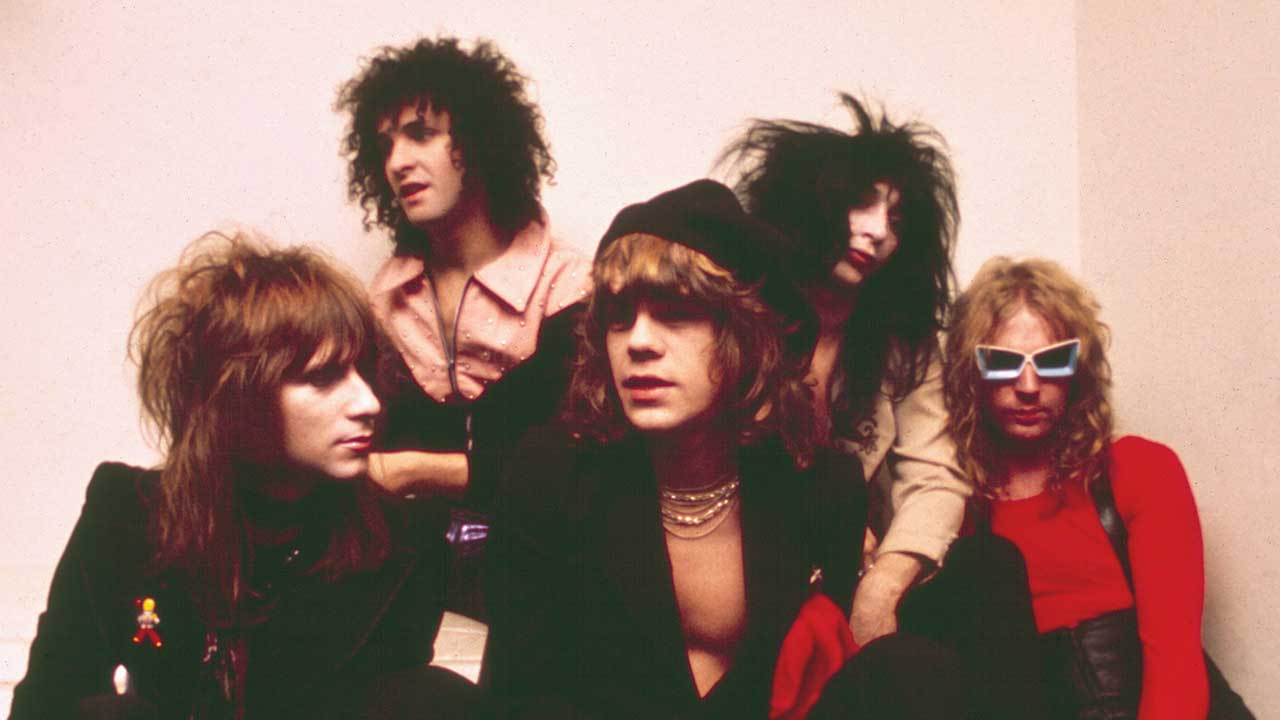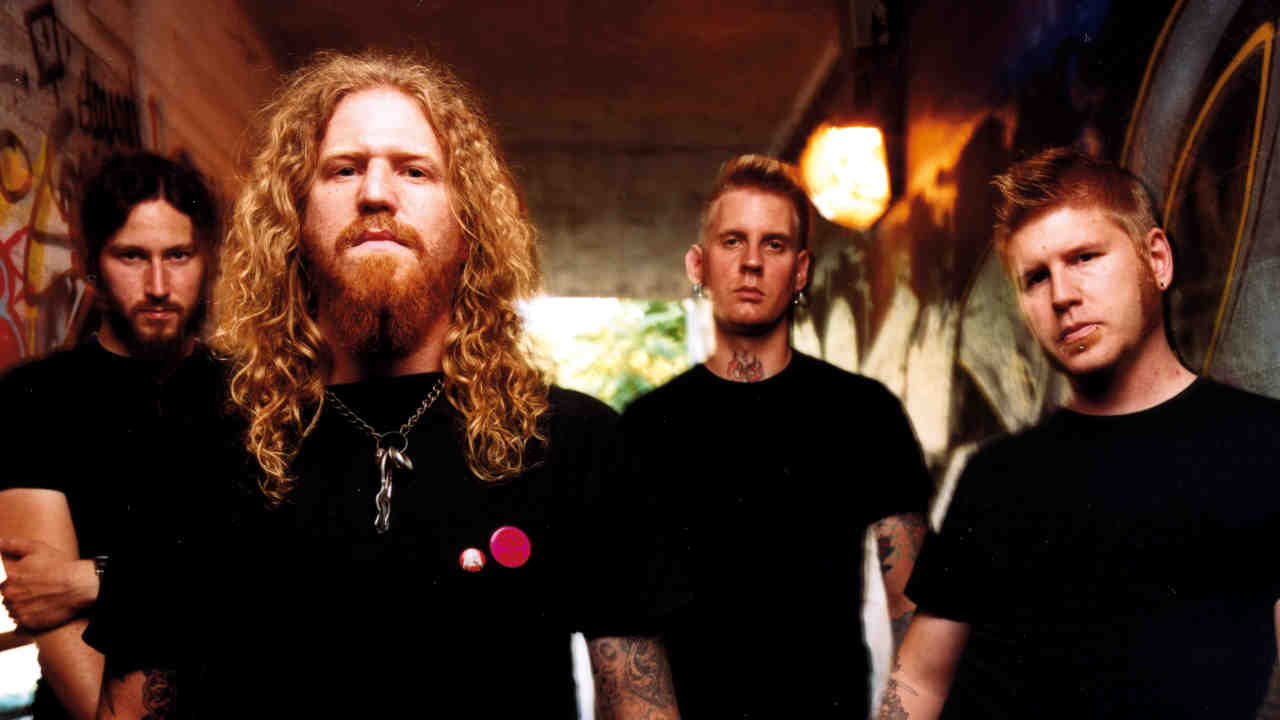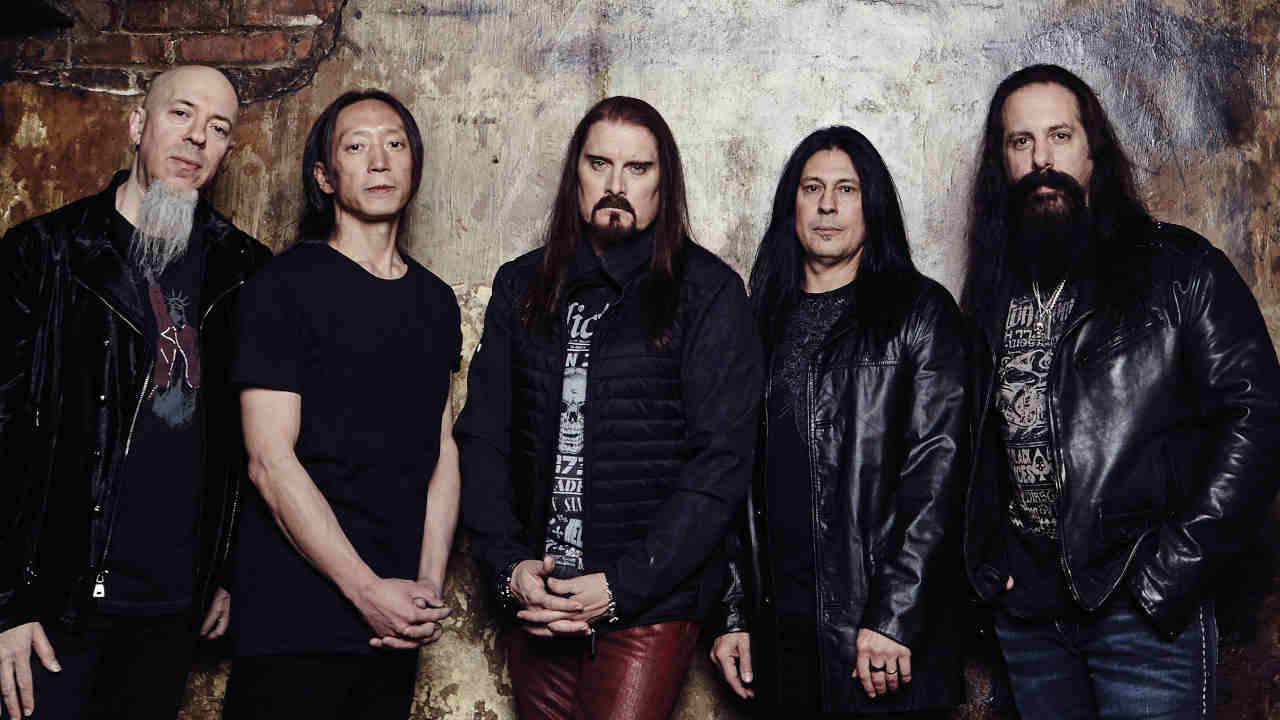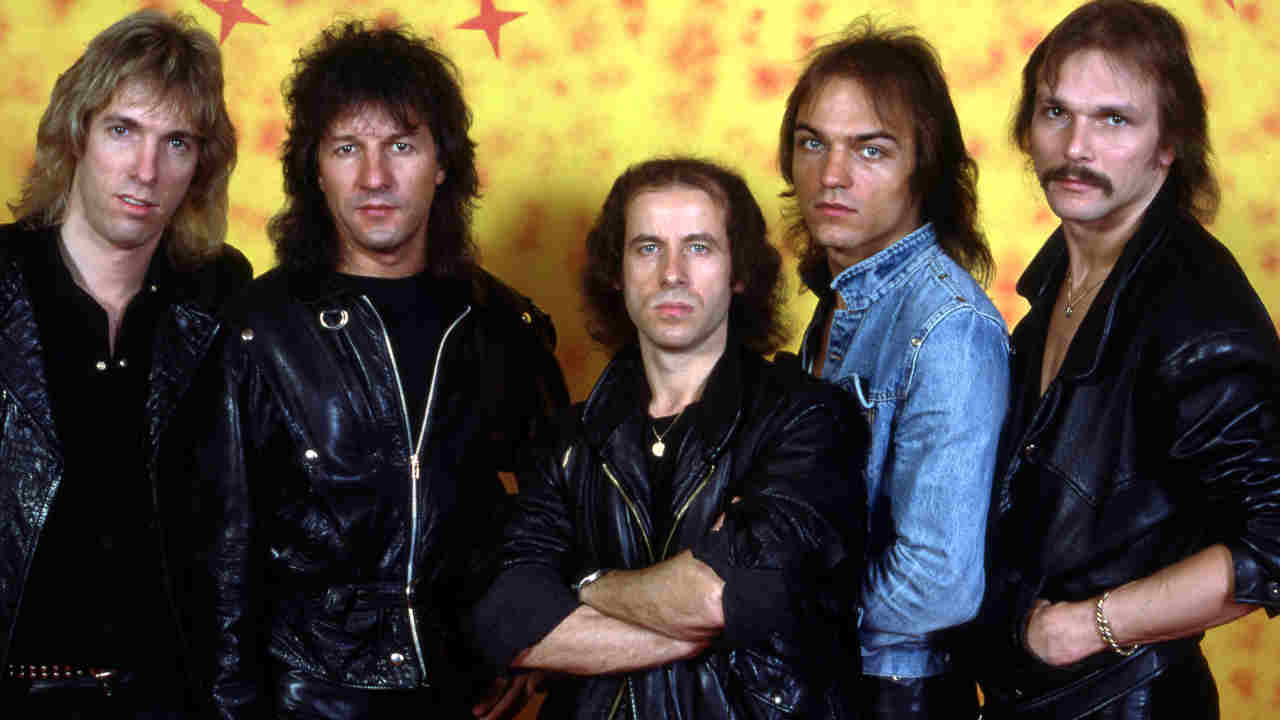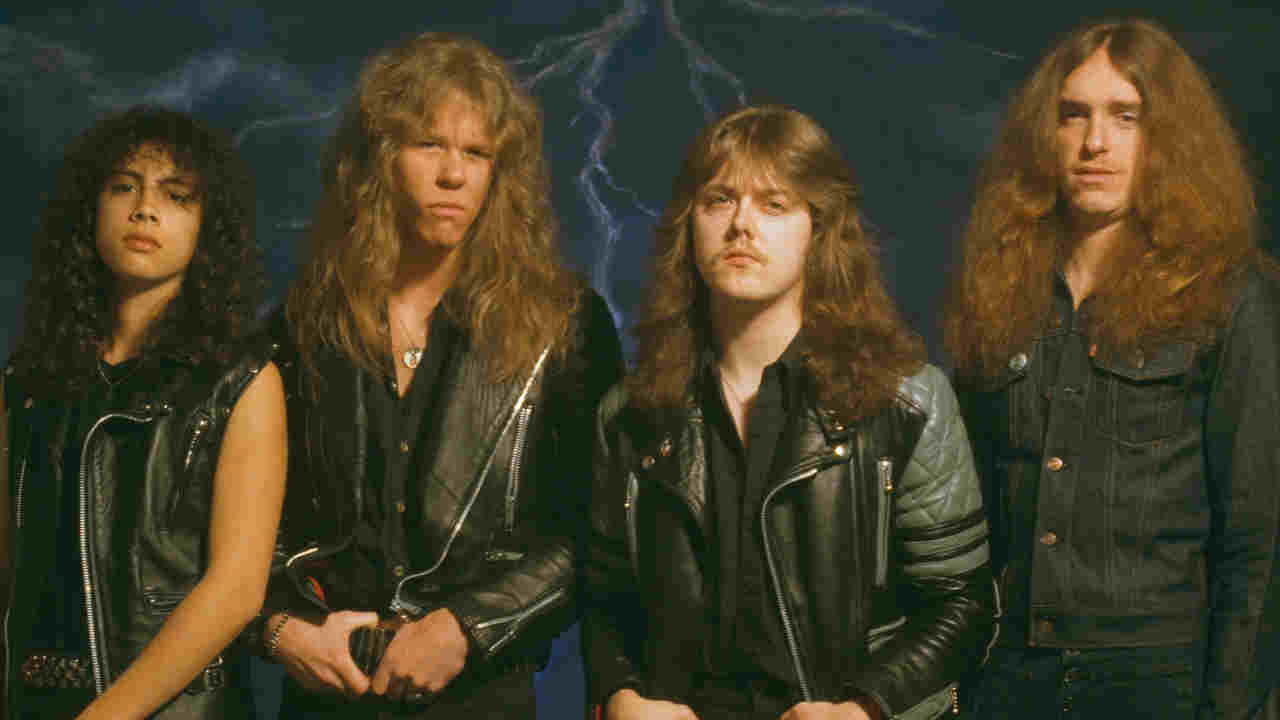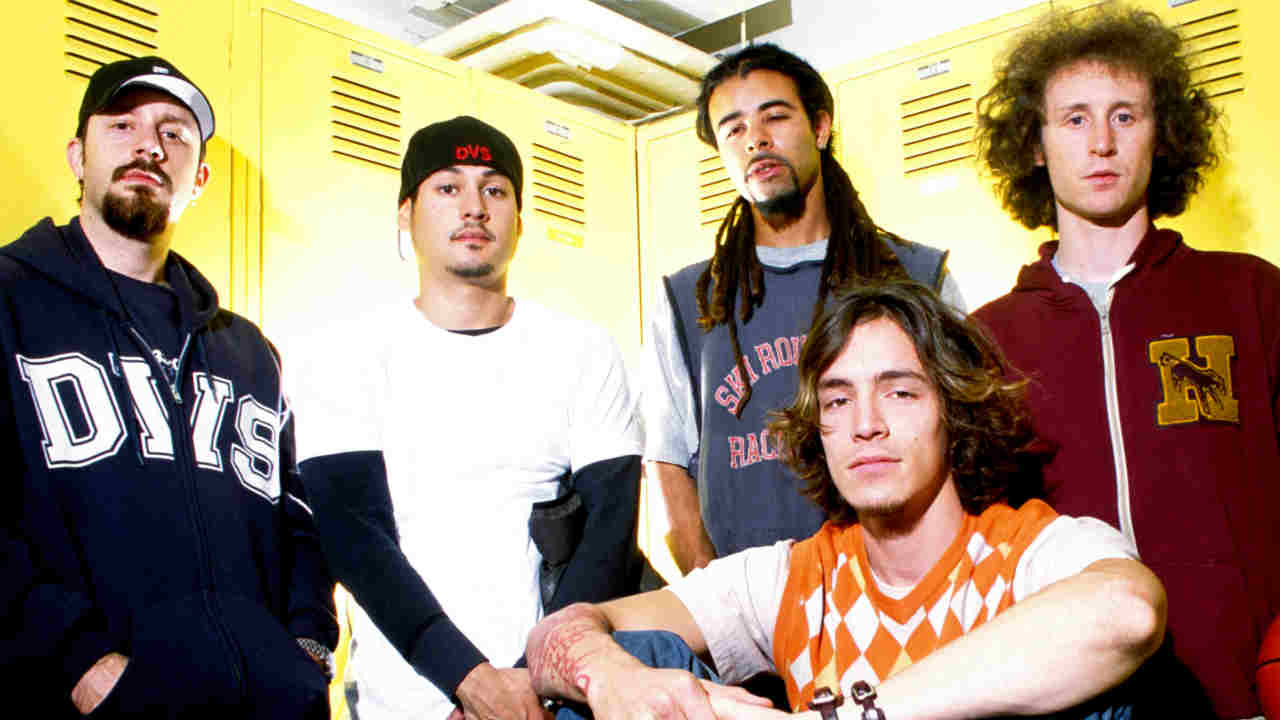When the New York Dolls swaggered forth from the Babylonian underbelly of Manhattan’s Lower East Side they looked more like assassins than saviours. To the conservative bean counters of 1972’s never-more-lucrative rock business, the Dolls spelled nothing but trouble: uncouth and uncontrollable they could handle, but unsaleable? Forget it.
And the Dolls were about as far from a commercial proposition as corporate America could possibly envisage. The Dolls’ physical embodiment of excessive subterranean sleaze and gender-bending decadence was total anathema to a zeitgeist only just adjusting to the sweeping reforms of the civil rights movement.
Where the Women’s Liberation movement was regularly painted as radical pinko freaks, what chance for a transvestite rock’n’roll band caked in Bowery hooker slap and called the New York Dolls? That they were from New York was bad enough; but no right-thinking, Midwest Allman Brothers fan was going to invest in any band that looked like that.
Small pockets of support ensured the Dolls an ephemeral career (Mercury Records struggled with them for a brace of implausibly influential albums; their home-town crowd of equally outré club-kid progenitors supported them to the hilt; the UK rock media cooed over them as an ever-outrageous substitute Stones), but their relentless pursuit of suicidal over-indulgence ended in death, addiction and ultimate destruction. Yet during their brief, coruscating period of tireless self-immolation, the Dolls unequivocally sowed the seeds that saved rock’n’roll.
The prevailing music scene was bloated with po-faced technicians bent on respectability; a desire to be taken seriously had led musicians to replace naïve pop sass and street-sharp danceability with lengthy solos and denim introspection. The Dolls gave rock its roll back by returning the debilitated genre to its deliciously delinquent roots.
They allied the seductive fated glamour of the Shangri-Las with the snot-nosed, we-piss-anywhere attitude of The Rolling Stones. Every aspect of their craft was accentuated; à la mode threads were too boxy, so they customised thrift shop drag. Angst-ridden, beauty shop chit-chat was simply too urgent to be delivered by any other means than desperate Dexedrine blurts. Halter tops and pedal pushers were chosen for their sluttish tightness – what better way to underline their extreme youth?
Lipstick gave a pout extra clout, rendered a sneer more severe. Guitars were wielded like sonic switchblades; Keith coifs teased into ravished Ronettes rats-tails. The Dolls were all about ‘attitude’, that priceless ephemeral commodity that record executives could no longer detect but which was still as potent as cat-nip to disaffected teens. And it was this attitude, channelled through generations of Jack-totin’, coke-tootin’, hell-raisin’, mirrorgazin’ glam-metallers, sleazemongers and punks that ultimately saved rock.
Messily sacrificed on the altar of opiates, the New York Dolls imploded before their spiritual progeny emerged to profit from their enduring legacy. But, like all good saviours, they’ve risen again. Of the original line-up only vocalist David Johansen and guitarist Sylvain Sylvain survive, but they’ve got quite a tale to tell. So here’s their story.

Sylvain Sylvain (aka Ronald Mizrahi) was born on Valentine’s Day 1953. His father was a well-to-do Cairo banker who, gradually stripped of his assets by the Draconian anti-Semitic policies of Egypt’s President Nasser, fled with his young family to Paris. It was here that Sylvain soaked up his Uncle Victor’s imported Gene Vincent and Ray Charles records. Upon resettling in Buffalo, New York in 1961, Syl picked up rudimentary piano from his accordionist uncle, but switched to guitar upon discovering The Beatles.
“They were everything to me,” he says of the Fab Four. “I grew my hair, started wearing mod clothes and cried for six months until my father got me a guitar. Then the Stones came on television and I was like: ‘Fuck The Beatles, they’re a bunch of wimps. Listen to these guys’. I loved the fucking Rolling Stones, and started asking every black guy in New York to teach me the blues.”
Meanwhile, Staten Island Catholic high-school drop-out David Johansen, three years Syl’s senior and similarly addicted to the blues, was regularly having his mind blown and ambitions stoked at 20-band Murray the K package shows by the likes of Mitch Ryder And The Detroit Wheels. Johansen’s father had been a singer, and before long his self-assured and gregarious son was duplicating the role in the Vagabond Missionaries and Fast Eddie & The Electric Japs.
“When I was a kid people said I had a distinctive-sounding voice,” Johansen deadpans dryly. “Maybe it’s genetic or something.”
Having relocated to Van Wyck Junior High in Jamaica, Queens, Sylvain hooked up with equally displaced Colombian émigré Billy Murcia “because that’s how surviving’s done”. Billy took up the drums and, in search of bandmates, their attentions were soon drawn to rakish local Lothario John Anthony Genzale, the man who would be Johnny Thunders.
“We wanted Johnny in the band because he was a cool-looking cat who had all the chicks,” Sylvain admits. “So I said to Billy: ‘If this guy can’t play, fuck it, we’ll grab his girls’.”
But the street-sharp Italian-American baseball prodigy could play – eventually. He first adopted the easier four-stringed bass route but then, upon deciding lead guitar was the glamour instrument, insisted upon Syl teaching him its rudiments – before summarily demoting him to rhythm guitarist. This reshuffle opened a bass player vacancy ultimately filled by Arthur Harold Kane, a gently gigantic dipsomaniac haunted by his mother’s early death and his stepfather’s subsequent rejection, whose first duty as a Doll was to accompany Billy on a Johansen finding expedition.
“I’d seen these guys around,” Johansen smiles, recollecting just how ludicrous the couple looked together: Kane a looming colossus, next to the pocket-sized, cherubic Murcia. “Then one day they knocked at my door and Arthur said: ‘I understand you’re a singer’.”
Sylvain named the band after noticing a sign for the New York Doll’s Hospital on Lexington Avenue, and they immediately set about conquering an unusually flaccid, post-Velvets NYC rock scene. “It was a big void,” Sylvain remembers. “The era of stadium rock – half-hour drum solos, 20-minute guitar solos. So boring. It wasn’t from the garage, the basement or the street any more, it was corporate.
"We hated that shit and rebelled against it. We’d perform where we could touch the audience and they could touch us. All our songs were three minutes of magic – just as long as they needed to be – and because an incredible array of people were dying for such a sound we were immediately embraced. But all we did was take it back to the way it should be: short, sharp, live and in-your-face.”
The New York Dolls’ look, meanwhile, was to die for. Sylvain and Billy had rag-trade experience; under the name of Truth And Soul they’d designed and made belly button-flashing sweaters (30 years before the garments’ total ubiquity) to fund amp-gathering and hash-smoking jaunts to London and Amsterdam.
So women’s suits – the only kind tailored to the band’s exacting sense of flash – were customised from thrift stores, and actual drag employed as their taste for flamboyance increased. But while the world at large was still gasping at flares, the Dolls’ Lower East Side stomping ground – populated by an array of cross-dressing night creatures, flamboyant gays, transvestite hookers, pillpopping club kids and walking, talking art installations – identified like mad.
“We started a Tuesday night midnight residency in The Oscar Wilde Room of The Mercer Arts Center,” says Johansen. “Which gave this disparate scene of people a focal point where they were able to network, make bands, clothing companies and movies.”
“When we performed there,” Syl says of the pivotal Mercer shows, “all hell broke loose. We became that generation’s band. The Velvets had gone, so that was the end of that. The MC5 were still around but they’d had their moment; I mean, they’d played the 1968 Democratic convention – I wasn’t even born then.”
Rolling on ecstatic home-town reactions and an unexpected groundswell of UK media support, the Dolls still couldn’t secure a record deal. So a profile hoisting support slot was arranged with Rod Stewart and The Faces at Wembley. “We were up in front of 8,000 people after playing for 300 at the most,” Johansen shrugs. “And while it was fun, we were totally ill-prepared for the situation.”
The short UK tour that followed the Wembley debacle ended in utter tragedy when, just as a $100,000 deal with Track Records was being finalised, Billy Murcia died. While attending a party in London’s Cromwell Road the 19-year-old drummer passed out under the combined influence of champagne and Mandrax and was subsequently drowned by those trying to revive him.
Returning to New York in shock, the surviving Dolls (their notoriety enhanced markedly by the seductive fascination of premature death) elected to continue as a unit and recruited ex-Shaker and Wayne County drummer Jerry Nolan. Born in 1946, Nolan was significantly older – and, as a former gang member, much tougher – than his bandmates. He became something of a father figure to the easily influenced Johnny Thunders and tightened up the band’s ramshackle sound significantly.
Finally the New York Dolls were a commercial proposition (of sorts) and Mercury Records took the plunge. Transferring the Dolls’ visceral live excitement to vinyl wasn’t exactly seen as a plum task, and following rejections from (among others) Phil Spector, Roy Wood and Leiber and Stoller, the band settled for Todd Rundgren as producer.
“Everybody said: ‘We don’t want to be near those guys.’” Johansen says. “So we’re sitting in Max’s wondering what to do, when we looked over at the next table and there’s Todd. He knew what we were about, who we were as guys and wasn’t afraid of us, so he was the most natural choice in the world.”
“Todd Rundgren delivered a dynamite album,” Sylvain gushes. “I love that first album.” And there’s plenty to love about it. Despite the fact that the only way to keep Jerry Nolan (the band’s most accomplished musician) in time was for engineer Jack Douglas to hammer a cowbell into his headphones, and that the studio was permanently filled with the band’s drunken, dope-befuddled coterie of camp followers, the Dolls’ eponymous debut was electrifying.
With Thunders’s buzz-saw guitar and a desperate rhythmic assault force, David Jo rode the lightning with chutzpah to spare. It makes perfect sense in today’s frazzled climate of libertine, jaded excess, but in 73 it was an abomination. Contemporary critics hated it.
“They didn’t know what the fuck to make of us.” says Johansen. “The majority of writers were into folky music or hippy bands, so we were a travesty to them. They’d built up this insane reverence for what had become known as rock music – it didn’t roll any more – so when we started it rolling again they were like: ‘You’re destroying five years of the Grateful Dead’s good work.’”
One typical example of the old guard making their negative feelings towards the band known occurred when Bob Harris tutted the words ‘mock rock’ after the Dolls’ infamous performance of Jet Boy on the BBC’s flagship rock show The Old Grey Whistle Test.
Today’s Dolls are not the band’s sole survivors for nothing. Johansen and Sylvain are more than shrewd enough to realise that lingering on the band’s reputation for obnoxiousness by dredging up their more excessive anecdotes will do them no good now that they’re back as a going concern.
Where they were once loose-lipped on oft-published tales of naked groupies draped in cold cuts, tied to chairs and placed in hotel elevators, now they simply smile indulgently and sip their vintage wines demurely: “I read these stories about us and I think: ‘My god, that is a sordid affair, I’m glad I wasn’t there’,” Johansen smirks with a roguish twinkle.
In their youth the Dolls just about wrote the rulebook on outraging polite society, but David and Syl’s youthful indiscretions are as nothing compared to Johnny Thunders. For it was Thunders who vomited in front of the French press at De Gaulle airport; who regularly wore a swastika armband; and while it was Sylvain who initially outraged a German press conference by asking: ‘Why are all krauts so fucking fat?’ it was Thunders who delivered the sucker punch with: ‘It’s all them Jew-meat sausages’.
At the dawn of the Dolls, Thunders had been a sweet, 18-year-old kid, high on nothing but rock’n’roll and youthful exuberance (witness their court photographer Bob Gruen’s excellent All Dolled Up movie for the evidence). But shortly before the band’s infamous 73 European tour that set Thunders’ infamy in stone, he’d discovered heroin.
“He turned into a fucking monster,” Sylvain admits. “[Heroin] made him aggressive for no reason because everything is boring until you’ve had a fucking fix. It rules everything and ruins everything.”
Mercury Records, meanwhile were demanding a second album. But the debilitated Dolls were already struggling: Johnny and Jerry were now both using smack; Arthur Kane was increasingly incapacitated both by drink and the injuries he incurred when his jealous part-time hooker girlfriend Connie Gripp had tried to slice his thumb off with a kitchen knife to keep him off the road; and the promotion and touring treadmill had curtailed the band’s writing activities.
Consequently they entered the studio with former Shangri-Las producer Shadow Morton armed only with two new songs, some leftovers from the first album plus four covers.
Johansen clicked with Morton immediately, but the band had reservations. “I thought the second album commercialised things a little bit,” Sylvain says of Too Much Too Soon, an appropriately titled album cluttered with Shadow’s trademark sound effects, girlie backing vocals, and a degree of stylistic schizophrenia with Thunders’s manic Chatterbox entirely at odds with a positively vaudevillian assault on The Coasters’ Bad Detective.
Cracks began to form in the Dolls line-up as a result of the album. For while Johansen loved it, Nolan loathed it. “You could have given Jerry Nolan a gold-plated toilet bowl and he wouldn’t have been satisfied,” Johansen sneers today. ”One person says one thing about a record and it becomes history.”
- What have The Ramones ever done for us?
- Q&A: Iggy Pop
- Bluffers's Guide to the New York Dolls
- David Bowie: The Gig That Invented Glam
The final scene in the first act of the New York Dolls’ story came with the arrival of Malcolm McLaren. The future Sex Pistols manager had first met Sylvain at a boutique trade show in 1970, and had followed the Dolls ever since. On arrival in New York in January 1975 McLaren discovered a drug-ravaged band in terminal decline.
Dropped by Mercury Records, the Dolls were reduced to playing ever smaller gigs, their scene-leading status usurped by The Ramones, Television and Patti Smith. Sylvain still remembers McLaren with fondness: “He got us a loft to rehearse in, helped to detox Arthur and tried to put Jerry and Johnny through rehab. He really stuck it out with us; put together a tour and the Little Hippodrome gigs where we did the Red Patent Leather show.”
Johansen, on the other hand, is simply dismissive: “Malcolm was just a guy who made some clothes for us. When we were on our last legs he came over and said he wanted to help us out. But we were an ungovernable force back then.”
The Red Patent Leather Show found the Dolls playing before a hammer and sickle backdrop: “The only thing that Malcolm and David ever agreed upon was that red flag, and it was the most kamikaze thing we could have done,” Sylvain says. “The Vietnam War was still on; it was suicidal.”
After a disastrous show in Florida, the Dolls split when Thunders and Nolan returned home to New York to form The Heartbreakers with Richard Hell.
“I was so fucking sad when the Dolls broke up,” Sylvain says. “I was the one that called up Jerry Nolan and put him in the band. And after I drove him and Johnny to the airport I called after them: ‘Hey guys. What about the New York Dolls?. Johnny kept walking, but Jerry turned around and said: ‘Fuck the New York Dolls’. And that hurt the shit outta me. I hated Jerry for that. Not because he broke up the band – it was heroin and addictions that broke up the band – but because he said that.”
The remaining Dolls struggled on for one final pay day – a lucrative tour of Japan – but it was too little, too late. Johnny Thunders and Jerry Nolan never won their battle with heroin. The former was found dead in a New Orleans hotel room in April 91 under unexplained circumstances but with methadone in his veins. The latter followed within a year. His health finally failing after years on the needle, he succumbed to bacterial meningitis and pneumonia in January 92.
After turning down repeated offers over the years, the surviving New York Dolls finally re-formed in June 2004 to play London’s Royal Festival Hall. Sylvain and Johansen (both of whom had remained in the music business, picking up major US label deals along the way) teamed up with Arthur Kane following a call from Morrissey, former President of the New York Dolls UK Fan Club.
For Kane, who had ultimately kicked booze from his life upon becoming an active member of the Mormon Church, this was clearly a magical event. Within a month, utterly at one with the universe having finally resolved outstanding issues with his oldest and dearest friends, Killer Kane attended hospital to receive treatment for a persistent cold, was diagnosed with leukaemia and died two hours later. And then there were two.
With One Day It Will Please Us To Remember Even This, Johansen and Sylvain have delivered a third album that is truly worthy of the New York Dolls name. Along with producer Jack Douglas, guitarist Steve Conte, bassist Sami Yaffa, drummer Brian Delaney and keyboardist Brian Koonin they have created a towering testament to unflinching strength in adversity.
Opiates and alcohol might have curtailed the lives of Johnny, Jerry, Billy and Arthur, but you can’t kill the immortal soul of the New York Dolls.
This feature was originally published in Classic Rock issue 96.
